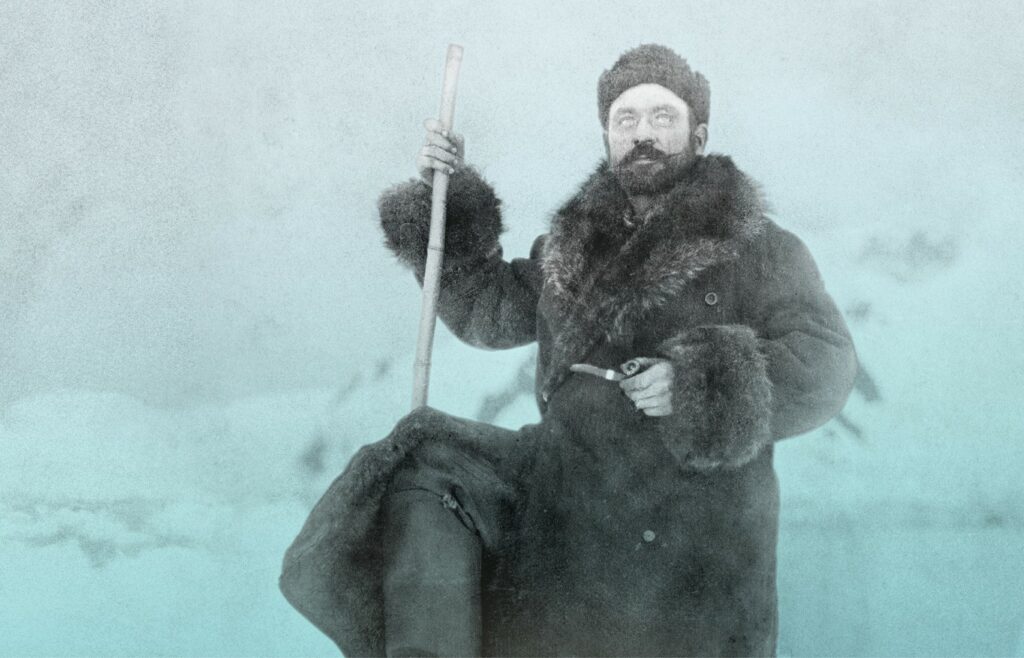Belgium has a history of expeditions to both poles, starting at the end of the 19th century. The flagship of the current Belgian polar involvement is the Princess Elisabeth Antarctica Research Station, a state-of-the-art station, which monitors climate change.
The new exhibition opened on Friday at the MAS Museum in Antwerp and focuses on the research ship Belgica. The ship left Antwerp for the last blind spot on the world map: Antarctica. The crew got stuck in the ice, and had to survive for a year in the freezing cold. But they continued pioneering scientific research and made history.
Diaries of the crew, stunning photographs and authentic parts of the ship bring this incredible adventure back to life. The exhibition tells us how the men managed to survive, who followed in their footsteps, and what Antarctica is like today.
The young, international crew of the Belgica, under the command of Adrien de Gerlache, was the first to overwinter in Antarctica after the ship was trapped in the ice and it would take the expedition 15 months until it could return to Belgium.
They had to survive there in the icy cold for a year. They fell ill due to poor nutrition and had an extra hard time mentally during the long polar nights without daylight. Determined, they continued pioneering scientific research: they mapped new areas with Belgian-sounding names and collected unknown fauna and flora.
“My first expedition to Antarctica was a commemoration of the centenary of this event,” said Alain Hubert, co-founder of the International Polar Foundation, which established and built the Belgian “Princess Elisabeth Station”, in an interview in 2017 for The Brussels Times.
"I'm glad the International Polar Foundation was able to contribute to such an interesting exhibition,” he said at the opening of the exhibition. “The public can learn about Belgium's rich history in Antarctica, especially when it comes to our history in polar science.”
Antarctica and climate change
“When the Belgica overwintered in Antarctica, it was the first-time scientists were able to do research on Earth's southernmost continent during the austral winter (June through August in the southern hemisphere)," he added. He is constantly warning against the planetary disaster if the sea level would rise as a result of the melting of the ice in Antarctica.
“The Princess Elisabeth Antarctica, which the International Polar Foundation initiated and now operates on behalf of the Belgian State, continues Belgium's long history of supporting polar science, which is essential in helping us understand climate change."
The museum shows some authentic pieces from its collection, such as the ship's wheel and crow's nest, sledges and clothing, the ice saws used to free the ship from the ice. The organ, on which Belgium's national anthem, The Brabanconne, plays time and again during the dark days on board, has also been preserved.
Antarctica remains a breathtaking place. This is palpable in the last room of the expo, where impressive contemporary video images make visitors pause to think about the Antarctic today.
The exhibition includes also art. Dutch artist Esther Kokmeijer invites visitors to reflect on Antarctica and the relationship of man and politics towards this piece of pristine nature. In her work Terra Nullius, she calls attention to Antarctica's geopolitical protected status.
Antarctica does not belong to any country - although some countries have territorial claims to this vast continent of 14 million km2 - and no passport is required to go there. Belgium was one of the original 12 signatories to the Antarctic Treaty in 1959.

Belgica stuck in the ice in Antarctica in 1898, credit: MAS
Leopold II and Belgica
Was the Belgica exhibition supported by Leopold II and influenced by Belgian colonialism at the time? “In some way the existence of Belgian Congo has initially made for very little interest in the project of an expedition to the Antarctic,” Waander Devillé, maritime conservator at MAS and primary curator of the exhibition, told The Brussels times.
At the time of Belgica expedition, Congo was still a private colony owned by king Leopold II. He engaged both private and federal resources and people for to realize his ambitions in central Africa, Devillé explains. The king had offered De Gerlache a position to navigate and map the Congo river, which the latter turned down to be able to realize his Antarctic expedition.
“It’s presumably so that De Gerlache’s reaction had contributed to the troubled relationship with Leopold II. The king refused any endowment in the Antarctic project, equally so because his interest lay far more in an economically beneficial region as Congo was, than in the mainly scientific potential in the Antarctic.”
The Belgian state eventually gave in and funded the expedition with 60.000 Belgian francs, about 15% of the amount that was considered necessary by De Gerlache. This is a large sum, but not compared to other expeditions from neighbouring countries that were fully supported by the state.
“I personally believe the funding only happened because the chairman of the federal Chamber was favourable on the expedition, and because abolishing the expedition so close to the date set for departure would have been an international blame for the Belgian state – even if it strictly was a private undertaking.”
On the departure day king Leopold was absent in multiple ways. The states steamship Emeraude was chartered by the geographical society – not sent by the king, whereas the Dutch queen had sent a Dutch cruiser to await the Belgica and escort it to open sea. In the De Gerlache strait, there is a bay named after queen Wilhelmina, but no place named after king Leopold II.
| Practical information: · To Antarctica: The polar pioneers of the Belgica · From 21 June to 3 November 2024 on the 3rd floor of the MAS Museum. · Tickets, more information and activities can be found on the MAS website. |
M. Apelblat
The Brussels Times

